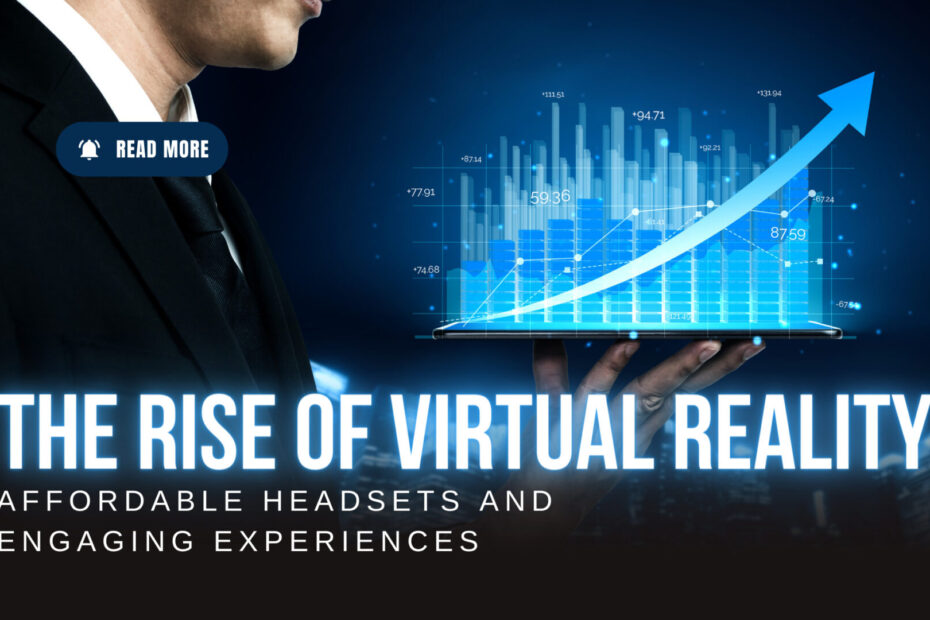Embark on an extraordinary journey into virtual reality (VR), where immersive experiences are no longer a distant dream. With the increasing affordability of VR headsets and groundbreaking advancements in haptic feedback technology, this captivating technology is now more accessible than ever before. Prepare to dive into the virtual world and explore the exciting applications of VR beyond gaming, including the rise of social VR platforms that bring people together in virtual environments.
The Accessibility Revolution
Step into a world where the boundaries between reality and the virtual realm blur as VR headsets become more affordable. Discover how the declining cost of VR headsets is fueling their widespread adoption, revolutionizing gaming, entertainment, and education. Uncover the staggering statistics and market projections that shed light on the exponential growth of the VR headset market. Witness firsthand how affordability fosters innovation and content development, transforming the landscape of VR experiences.
Immersion and Realism with Improved Haptic Feedback
Be amazed as haptic feedback technology breathes life into the virtual world. Delve into the fascinating world of haptic feedback and understand its pivotal role in creating immersive VR experiences. Marvel at recent breakthroughs in haptic feedback technology and explore how these advancements heighten realism, allowing users to feel the sensations of touch and interaction with virtual objects. Unleash your imagination and discover the diverse applications of enhanced haptic feedback, from medical simulations to revolutionary virtual training experiences.
Social VR: Collaboration and Beyond
Witness the dawn of a new era where virtual environments become the stage for social interaction. Immerse yourself in social VR platforms, where friends, colleagues, and strangers connect in real-time. Experience the power of collaborative virtual environments and delve into the exciting applications of social VR in fields such as social networking, collaboration, and education. Uncover remarkable examples of businesses utilizing social VR for team building, training, and beyond.
VR Beyond Gaming: A Tool for Enterprise
Venture beyond the realm of gaming and uncover the transformative potential of VR in the corporate landscape. Unlock the secrets behind the increasing adoption of VR in businesses worldwide for training, simulation, and collaboration. Delve into VR’s benefits to healthcare, manufacturing, and aviation industries, where immersive training experiences can be simulated with unparalleled realism. Explore real-life examples of how VR reshapes how businesses train employees, design products, and collaborate across borders.
VR’s Impact on Gaming and Education
Embark on a thrilling adventure into the gaming industry, where VR revolutionises our play. Dive into a world where virtual reality enhances immersion, transports gamers to new realms, and challenges the boundaries of traditional gaming experiences. Discover the impressive growth of the VR gaming market and explore notable VR game titles that captivate audiences with their immersive gameplay. In education, witness how VR transforms classrooms, making learning an interactive and unforgettable experience. Uncover the statistics and projections that illustrate the expanding role of VR in shaping the future of education.
VR’s Business Benefits: Cost Savings, Increased Sales, and Customer Satisfaction
Peek behind the curtain and witness the incredible impact of VR on businesses. Unearth compelling studies that reveal how VR can revolutionize employee training, saving companies high costs while providing immersive and engaging experiences. Delve into sales and marketing, where VR brings products to life through captivating demonstrations that enhance customer engagement. Discover the potential of VR to improve customer satisfaction, offering personalized and interactive experiences that leave lasting impressions.
Conclusion:
As we conclude our exhilarating exploration of the rise of virtual reality, it becomes evident that VR is more than a passing trend—it’s a transformative technology reshaping various aspects of our lives. The increasing accessibility of affordable VR headsets, enhanced haptic feedback, the emergence of social VR platforms, and the growing adoption in enterprise and education sectors, propel us into a future where the virtual and physical worlds intertwine seamlessly. So, take the leap, grab a VR headset, and immerse yourself in the endless possibilities of this captivating technology. The virtual world awaits your presence!

